Never been to the Pacific Northwest?
We're pretty sure after you check this out that will change.
If you're a local, let this serve as a tribute to the unparalleled land we call the Pacific Northwest, "PNW" or "Cascadia."
The Pacific Northwest is a region in North America that has various defining boundaries but is undeniably linked by the Pacific Ocean and the Cascade Mountains - a series of volcanoes stretching from Lassen Peak in northern California to Mount Garibaldi in southern British Columbia.
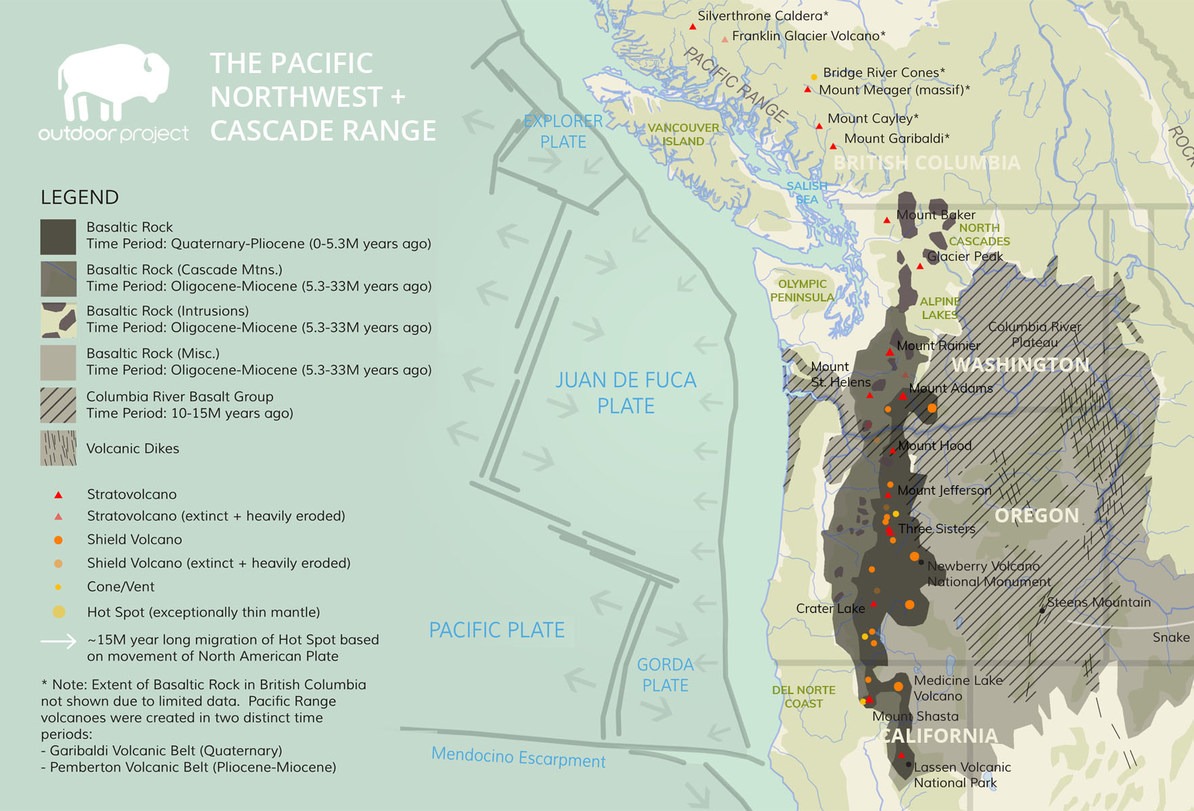
The people are known to be friendly, liberal, have an obsession with coffee and craft beer, wear flannel, enjoy legal marijuana, and all seemingly drive Subarus.
But, as far as we're concerned, it is the unmatched natural beauty that brings those in the Pacific Northwest together (and perhaps their tolerance of rain). The volcanoes rise prominently, the trees grow tall, waterfalls abound, salmon swim strong, and the Pacific Ocean carves dramatic and craggy shorelines.
To tease your recreation and adventure travel sensibilities we've teamed with our friends Outlive Creative to highlight just a few of the wonders that make the Pacific Northwest so unique.
Here are just a few highlights:
Favorite PNW Recreation-Oriented Towns
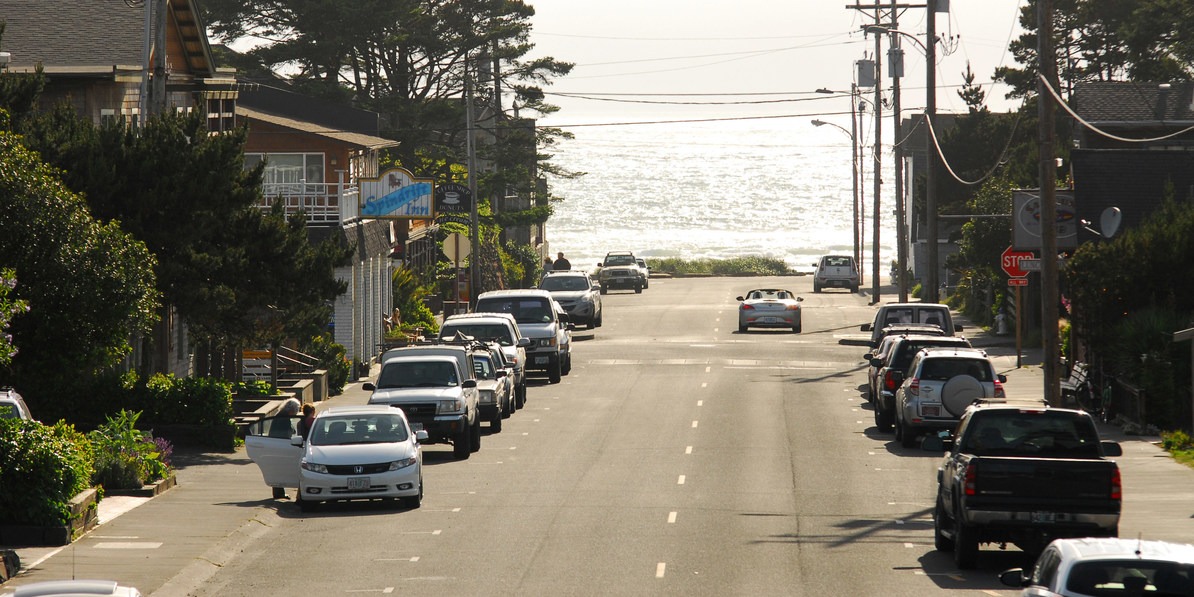
Downtown Manzanita on the Northern Oregon Coast. Photo by Tyson Gillard.
British Columbia:
- Whistler (Ski and winter recreation capital of North America)
- Vancouver (The emerging best base camp for downhill mountain biking)
- Tofino (Canada's surfing capital)
Washington:
- Friday Harbor (North America's best sea kayaking town)
- Winthrop (Access point to the North Cascades)
- Leavenworth (Mountaineers heaven)
- Port Townsend (Amazing it its own right, but the gateway to the Olympics)
Oregon:
- Manzanita (Oregon's best little beach town)
- Hood River (Kite and windsurfing capital of North America)
- Bend (Most diverse recreation town west of the Rockies)
- Oakridge (Oregon's mountain biking Mecca)
- Gold Beach (Gateway to the redwoods and rugged coastline)
California:
- McCloud (Mount Shasta and Lassen access point, and one of California's most charming towns)
PNW's Best Lodging + Base Camps
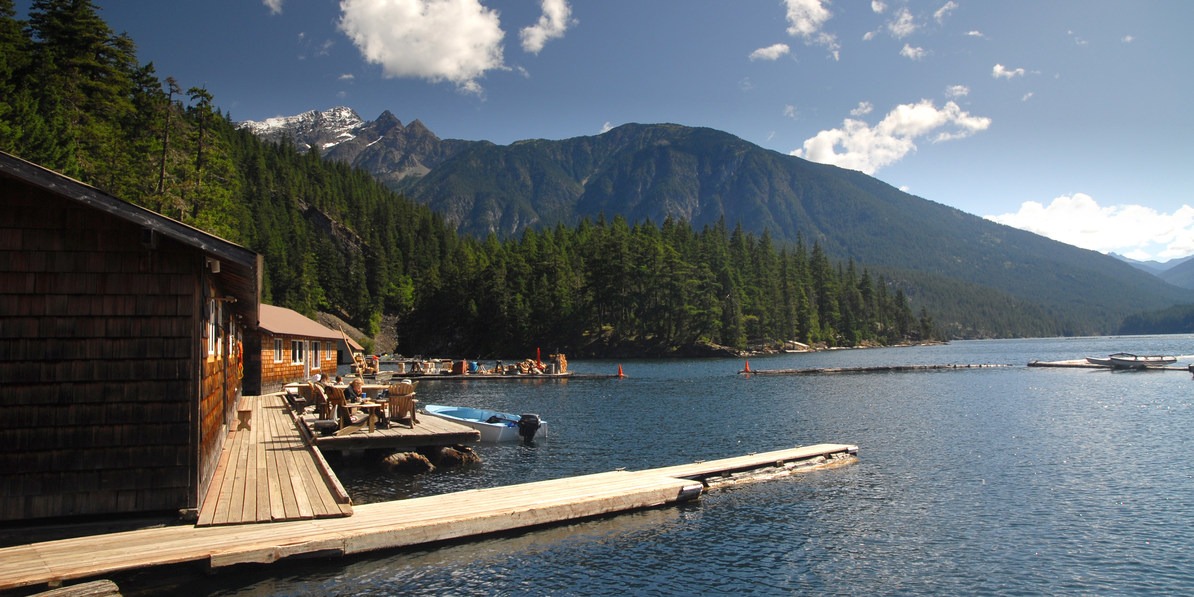
Ross Lake Resort in Washington's North Cascades. Photo by Tyson Gillard.
Erected from stands of coniferous old-growth lumber, the wilderness areas of Pacific Northwest are sprinkled with quintessential rustic lodges and cabins fit for the most deserving outdoor travelers. Whether you're looking to sit lakeside in an Adirondack chair, cozy up to a large stone fireplace with some bourbon, or rough it in the woods with a tent and little more, you'll find no shortage of incredible overnight accommodations and campsites that make you feel thousands of miles from the stresses of being home.
- Journeyman Lodge (Whistler's backcountry, BC)
- Lake Crescent Lodge (North end of Olympic National Park, WA)
- Log Cabin Resort (North end of Olympic National Park, WA)
- Ross Lake Resort (Heart of North Cascades, WA)
- Sun Mountain Lodge (East access to North Cascades, WA)
- The North Cascades Lodge at Stehekin (Southeast access to North Cascades and Lake Chelan, WA)
- Longmire + National Park Inn (Mount Rainier National Park, WA)
- Paradise Inn (Mount Rainier National Park, WA)
- Kalaloch Lodge + Cabins (Coastal access to Olympic National Park, WA)
- Lake Quinault Lodge (Coastal and rainforest access to Olympic National Park, WA)
- Tokeland Hotel (Oldest resort hotel in Washington on the state's Southwest Coast)
- Timberline Lodge (Mount Hood, OR)
- Olallie Lake Resort (Mount Jefferson, OR)
- Loon Lake Lodge + RV Resort (on the Oregon Coast Range's only fully accessible natural lake)
- Elk Lake Resort (Oregon's Cascade Lakes)
- The Suttle Lodge (Access for Central Oregon Cascades)
- Crater Lake Lodge (Crater Lake National Park, OR)
Camping Articles:
- Where to Camp Near Vancouver B.C.
- Best Lake + River Camping in Washington
- Best Year-Round Campgrounds in Washington
- Best Rainy Day Camping Near Seattle
- Best Camping Near Mount Rainier
- Best Lake Camping in Oregon
- Best Year-Round Camping in Oregon
- A Guide to Camping on the Northern Oregon Coast
- Camping on the Southern Oregon Coast
PNW National Parks + Monuments
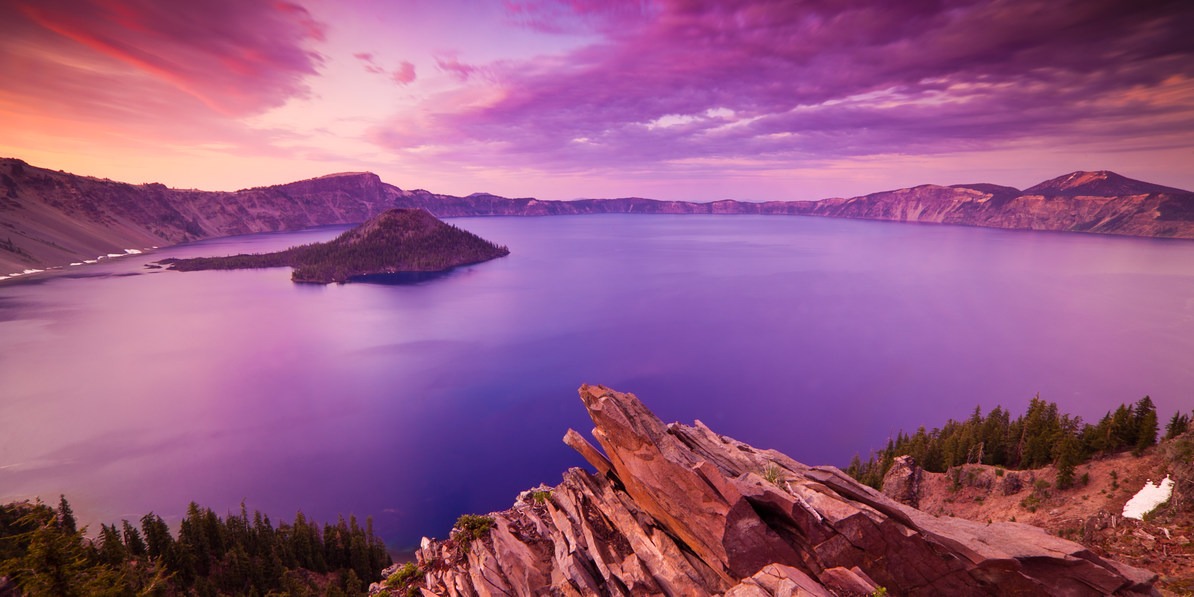
Vibrant sunset from the Discovery Point Trail in Crater Lake National Park. Photo by Race Jones.
- Olympic National Park (Most ecologically diverse national park in North America)
- Mount Rainier National Park (Most prominent (height from base to summit) mountain in the continental U.S.)
- North Cascades National Park (Highest concentration of granite peaks in the U.S.)
- Mount St. Helens National Volcanic Monument (Most active volcano in the continental U.S.)
- Crater Lake National Park (Deepest lake in North America)
- Newberry National Volcanic Monument (Largest volcano in Oregon)
- Oregon Caves National Monument (Multi-million-year-old cave network)
- Redwoods National + State Parks (Tallest trees in the world)
- Lassen Volcanic National Park (Southernmost volcano in the Cascades)
PNW's Best Hiking + Backpacking
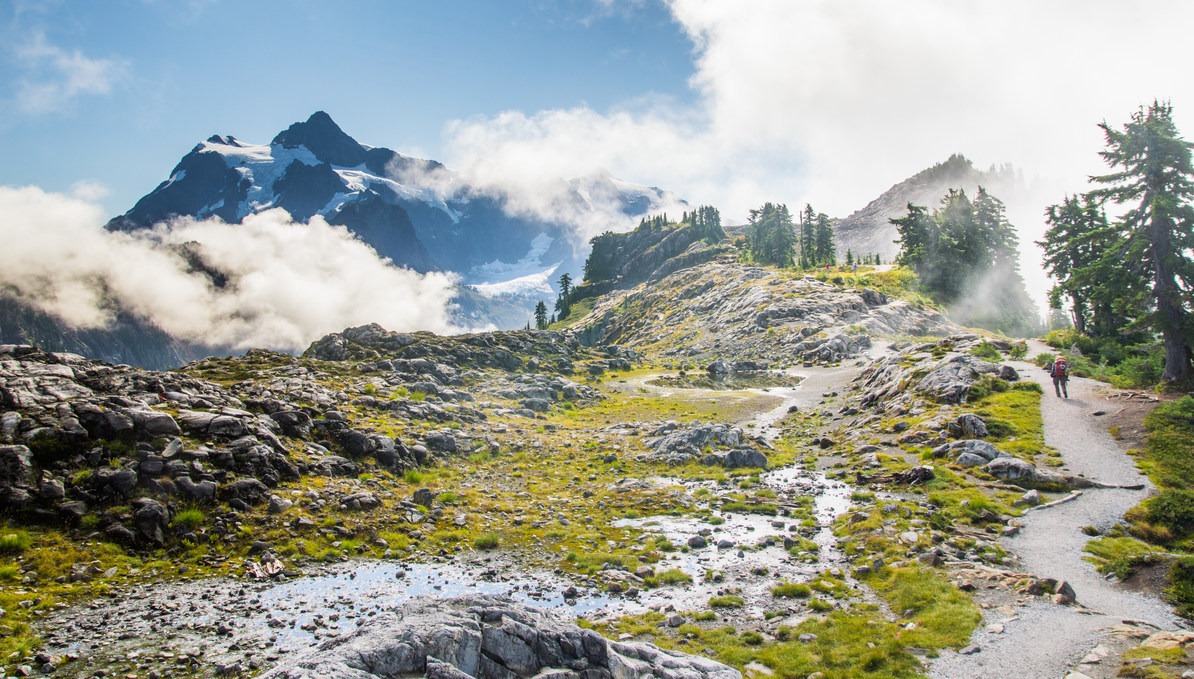
Artist Point with a view of Mount Shuksan on the Pacific Northwest National Scenic Trail in Washington's North Cascades. Photo by Jared Kennedy.
From hiking through the United States' most undeveloped coastline to some of the continent's most prominent peaks, the Pacific Northwest has a jaw-dropping array of hiking and backpacking opportunities. The only downside is that snow lingers late for anything with a trailhead over 5,000 feet in elevation, so the window for exploring alpine meadows and lakes is relatively short. The best months are August, September and even early October. Highlights include:
- Brew Lake (Whistler, BC)
- Rainbow Lake + Madeley Lake (Whistler, BC)
- Golden Ears Summit Trail (Vancouver, BC)
- Pacific Northwest National Scenic Trail (North Cascades, WA)
- The Enchantments (North Cascades/Alpine Lakes, WA)
- Tuck + Robin Lakes (North Cascades/Alpine Lakes, WA)
- Olympic South Coast Wilderness Trail, La Push to Hoh River (Olympic Peninsula, WA)
- The High Divide Loop (Olympic Peninsula, WA)
- Enchanted Valley (Olympic Peninsula, WA)
- Wonderland Trail (Mount Rainier, WA)
- Goat Lake Loop Trail (Mount Rainier/Adams, WA)
- Mount Margaret Backcountry (Mount St. Helens, WA - 17.4 miles)
- Oregon Coast Trail (OR)
- Timberline Trail (Mount Hood, OR)
- Jefferson Park (Mount Jefferson, OR)
- Three Sisters Loop (Central Oregon)
- South Sister (Central Oregon)
- Rogue River Trail (Southern Oregon Coast)
- Diamond Peak (Southern Oregon Cascades)
Articles:
- Best Day Hikes Near Vancouver B.C.
- Washington's 80 Best Day Hikes
- 16 Best Hikes on the Washington Coast
- Washington's Best Backpacking Trips
- Mount Rainier's 7 Best Day Hikes
- Seattle's Best Day Hikes
- Oregon's 75 Best Day Hikes
- Oregon's Best Backpacking Trips
- Best Hikes on the Oregon Coast
- 30 Best Hikes Near Bend, Oregon
PNW's Best Mountaineering + Climbing
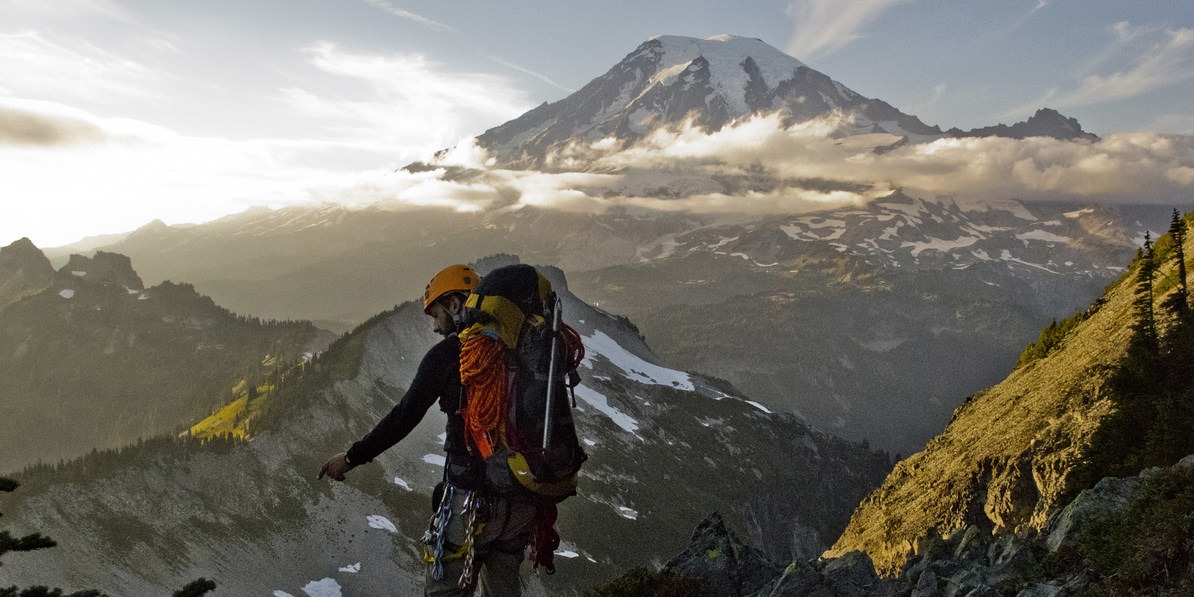
View of Mount Rainier from Unicorn Peak. Photo by Andrew Stohner.
Simply, the Pacific Northwest is a climbers paradise. It's not the type of climbing you'll find in Joshua Tree or Yosemite Valley where you can virtually drive up to your destination; rather, in the PNW you're going to have to work for every climb. Long and rewarding approaches into alpine conditions are the mark of climbing in the Cascades and into British Columbia's Coast Mountains. Twenty stratovolcanoes make up the dominant Cascade Peaks, and the North Cascades and Coast Range have nearly countless gnarly granite peaks worthy of the world's best climbers. Highlights include:
- Forbidden Peak (North Cascades, WA)
- Vesper Peak (North Cascades, WA)
- Mount Rainier via Disappointment Cleaver (Mount Rainier, WA)
- Mount Rainier via Emmons-Winthrop Glacier (Mount Rainier, WA)
- Unicorn Peak (Mount Rainier, WA)
- Mount Olympus (Olympic Peninsula, WA)
- Prusik Peak (Alpine Lakes, WA)
- Mount Adams, South Climb (Mount Adams, WA)
- Mount Hood, South Route (Mount Hood, OR)
- Smith Rock (Central Oregon)
- Mount Washington (Central Oregon)
- Mount Thielsen (Southern Oregon Cascades)
- Mount Shasta via Avalanche Gulch (Mount Shasta, CA)
- Mount Shasta via Clear Creek (Mount Shasta, CA)
PNW's Best Winter Recreation
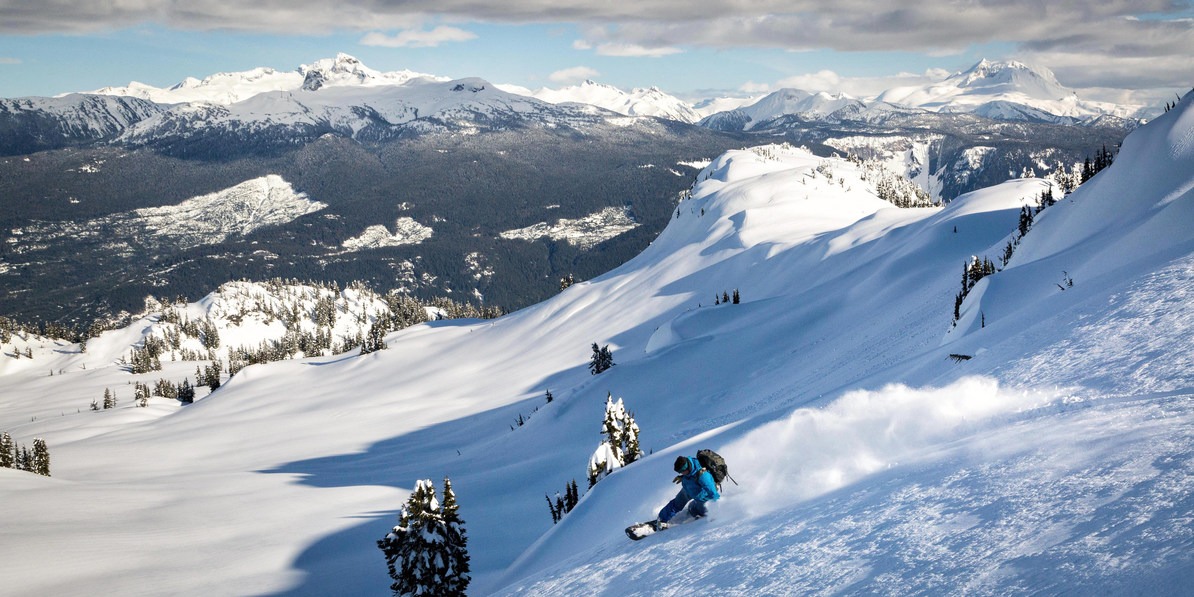
A snowboarder descends down Mount Brew in the Squamish/Whistler backcountry, with views of Castle Towers Mountain (8,779 ft) and Mount Garibaldi (8,786 ft) in the distance. Photo by Duncan Sadava.
While the Rockies may have lighter snow, there's one thing the Pacific Northwest has that leaves all other winter destinations on the continent drooling with envy, and that's glaciers. Why does that matter? Well, while global climate change is certainly putting our glaciers to the test, the glaciers here mean that the PNW provides skiing year round. And, with several mountains with over 9,000 feet of elevation, that's a lot of snow to shred! So, in spring while others around the country are packing up their ski equipment for the season, those in the PNW are strapping on their skins and taking to the volcanoes for epic corn-filled rides.
The volcanoes not withstanding, the PNW also receives more snowfall than anywhere else on the planet (record 1,140 inches fell on Mount Baker in the winter of 1998-1999), so you'll find no shortage of winter activities like skiing, snowboarding, cross-country skiing, snowshoeing or sledding. Highlights include:
Ski Resorts:
- Whistler Blackcomb (Whistler, BC - 8,171 acres, 5,278 vertical feet)
- Mt. Baker Ski Area (Mount Baker, WA - 1,000 acres, 1,500 vertical feet)
- Stevens Pass (Alpine Lakes, WA - 1,125 acres, 1,800 vertical feet)
- The Summit at Snoqualmie (Alpine Lakes, WA - 1,914 acres, 2,280 vertical feet)
- Crystal Mountain (Mount Rainier, WA - 2,300 acres, 2,602 vertical feet)
- Timberline (Mount Hood, OR - 1,430 acres, 3,680 vertical feet)
- Mt. Hood Meadows (Mount Hood, OR - 2,150 acres, 2,777 vertical feet)
- Mt. Hood Ski Bowl (Mount Hood, OR - 960 acres, 1,400 vertical feet - Largest night skiing resort in U.S.)
- Mt. Bachelor (Central Oregon - 4,318 acres, 3,365 vertical feet)
- Mt. Ashland (Siskiyou Mountains, OR - 220 acres, 1,150 vertical feet)
- Mt. Shasta Ski Park (Mount Shasta, CA - 425 acres, 1,390 vertical feet)
Backcountry Skiing + Touring:
- Journeyman Peak, Callaghan Country (Whistler/Squamish, BC)
- The North Shoulder, Callaghan Country (Whistler/Squamish, BC)
- Mount Brew (Whistler/Squamish, BC)
- Mount Joffre (Whistler/Squamish, BC)
- Hidden Lake Lookout (North Cascades, WA)
- Table Mountain + Diamond Head (Alpine Lakes, WA)
- Mount Adams, Southwest Chutes (Mount Adams, WA)
- Mount St. Helens, Worm Flows (Mount St. Helens, WA)
- Illumination Saddle (Mount Hood, OR)
- Tam MacArthur Rim (Central Oregon)
- Broken Top, Clock Couloir (Central Oregon)
- Mount Bailey (Southern Oregon Cascades)
- Mount Shasta, Hotlum-Wintun Ridge (Mount Shasta, CA)
- Mount Shasta, West Face Route (Mount Shasta, CA)
Cross-country Skiing + Snowshoeing:
- Lost Lake Park (Whistler, BC)
- Callaghan Country (Whistler, BC)
- Artist Point (Mount Baker, WA)
- Lake Valhalla (North Cascades, WA)
- Wenatchee Ridge (Alpine Lakes, WA)
- Hyak Sno-Park Trails (Alpine Lakes, WA)
- Reflection Lakes + Inspiration Point (Mount Rainier, WA)
- Fall Creek Falls (Mount Adams, WA)
- Tamanawas Falls (Mount Hood, OR)
- Tom, Dick + Harry Mountain (Mount Hood, OR)
- Trillium Lake Loop (Mount Hood, OR)
- Tumalo Mountain (Central Oregon)
- Black Butte (Central Oregon)
- Paulina Creek + Falls Loop Trail (Central Oregon)
- Odell Lake Overlook (Southern Oregon Cascades)
- The Watchman (Crater Lake/Southern Oregon Cascades)
- Brown Mountain (Southern Oregon Cascades)
- Castle Dome (Mount Shasta, CA)
- Middle Peak (Mount Shasta, CA)
Articles:
- Washington's Best Winter Destinations
- Washington's Best Winter Waterfalls
- Snowshoeing Near Seattle
- Oregon's Best Winter Waterfalls
- 10 Amazing Snowshoe Trails in Oregon
- Best Snowshoeing in Bend
PNW's Best Mountain Biking
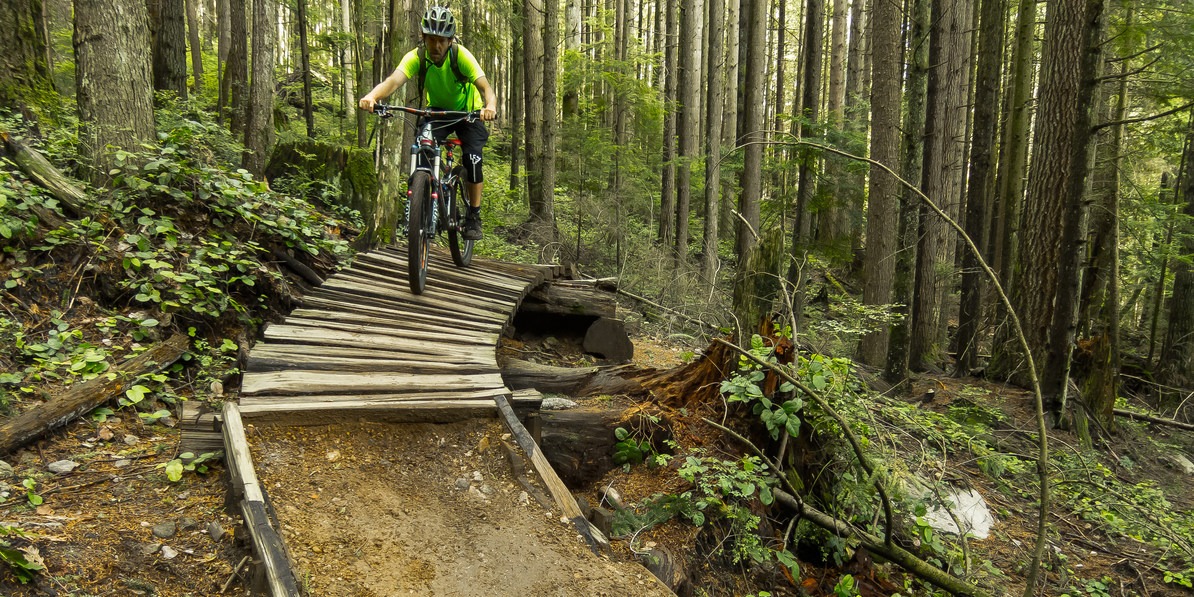
Built-up trails on Mount Fromme outside of Vancouver, B.C. Photo by Adam Cowcill.
Move over Moab, Utah, there's some new kids in town. It may be a controversial statement for those from the Rockies, but from our perspective it's clear that the Pacific Northwest has become the continent's premiere mountain biking region. All of this can chiefly be attributed to the local infrastructure investment in southern British Columbia with near-countless dizzyingly epic downhill rides - with gaps, bridges, jumps, teeter totters and much, much more. And the rest of the PNW has taken note, with Oakridge, Oregon, emerging as the West Coast's top cross-country biking destination. Highlights include:
- North Whistler Mountain Bike Trails (Whistler, BC)
- Westside Mountain Bike Trails (Whistler, BC)
- Lost Lake Mountain Bike Trails (Whistler, BC)
- One Mile Lake Mountain Bike Trails (Pemberton, BC)
- Mount Fromme (Vancouver, BC)
- Mount Seymour (Vancouver, BC)
- Cypress Mountain (Vancouver, BC)
- Duthie Hill Park (Seattle, WA)
- Gunsight Ridge (Mount Hood, OR)
- Sandy Ridge Trail System (Mount Hood, OR)
- Black Rock Mountain Bike Area (Salem, OR)
- McKenzie River Trail (Eugene, OR)
- Waldo Lake Trail (Eugene, OR)
- Lost Creek Trail (Oakridge, OR)
- Moon Point Trail (Oakridge, OR)
- Larison Creek Trail (Oakridge, OR)
- Phil's Trail Complex (Bend, OR)
- Peterson Ridge Trail System (Bend/Sister, OR)
Articles:
PNW's Best Sea Kayaking + Canoeing
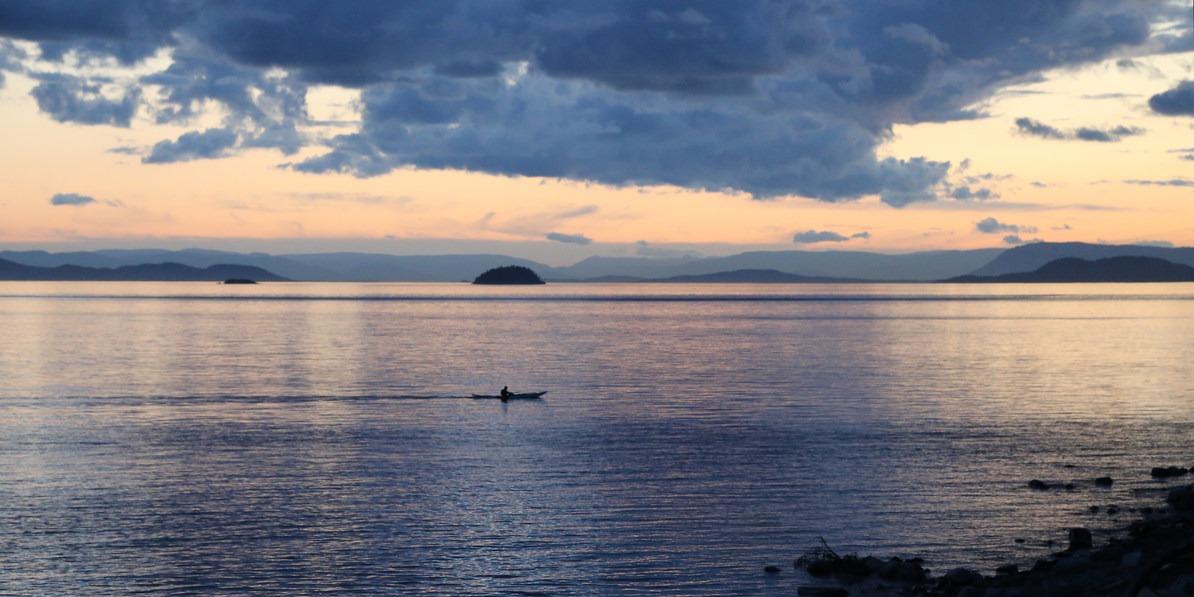
A kayaker crosses from Orcas Island to Sucia Island in Washington's San Juan Islands. Photo by Shane Kucera.
The Salish Sea is one of the Pacific Northwest's most defining and iconic bodies of water. Its Puget Sound lies in the U.S., its Strait of Georgia in Canada, and its Strait of Juan de Fuca divides the two nations. It also happens to be a sea kayaker's paradise. In fact, Seattle and Vancouver can easily claim to be the world co-capitals for sea kayaking. Home to orcas, sea otters, harbor porpoises, giant Pacific octopus, Stellar sea lions, and many, many other wildlife species, along with quaint port towns, lighthouses and rustic lodges, the Salish Sea truly is a world-class venue for paddlers, and overnight, multi-island adventures can make for a once-in-a-lifetime experience.
Higher up in the mountains, melting glaciers create stunning crystal clear and opal waters that are perfect for canoes, kayaks and stand-up paddleboards. Whether you are exploring Washington's Alpine Lakes Wilderness, Central Oregon's Cascade Lakes, or the countless other inland bodies of water, you'll be mesmerized by how picturesque, tranquil and relaxing the lakes of the PNW really are.
Highlights for both sea and lakes include:
- Patos Island (San Juan Islands, WA)
- Jones Island (San Juan Islands, WA)
- Clark Island (San Juan Islands, WA)
- Stuart Island (San Juan Islands, WA)
- San Juan Island, Smallpox Bay to Deadman Bay (San Juan Islands, WA)
- Orcas Island to Sucia Island (San Juan Islands, WA)
- Dungeness Bay to New Dungeness Lighthouse (Olympic Peninsula, WA)
- Walupt Lake (Mount Adams, WA)
- Olallie Lake (Mount Jefferson, OR)
- Sparks Lake (Central Oregon Cascade Lakes)
- Little Lava Lake (Central Oregon Cascade Lakes)
- Hosmer Lake (Central Oregon Cascade Lakes)
- Waldo Lake (Central Oregon Cascade Lakes)
- Summit Lake (Southern Oregon Cascades)
Paddle Articles:
- Best Paddle Spots on the Washington Coast
- 50 of Washington's Best Sea Kayaking Adventures
- Central Oregon Cascade Lakes
- Cascade Lakes Below the Surface
PNW's Best Whitewater Kayaking + Rafting
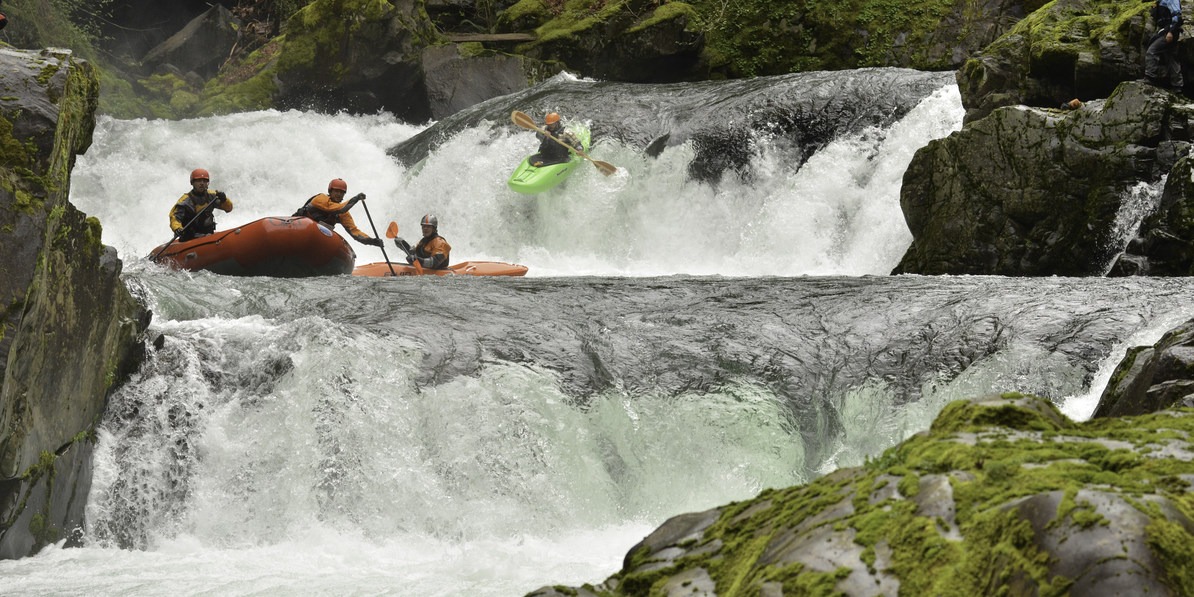
Kayakers and rafters on Canyon Creek in southwest Washington. Photo by Adam Elliott.
It is no secret that it rains a lot in the Pacific Northwest, and it also happens to be home to the most snowfall on Earth. That, combined with mountains, equals a lot of whitewater. And by a lot, we really mean a LOT! Unfortunately/fortunately, this means that most of the rivers are reserved for the most professional and daring of paddlers willing to drop waterfalls, but it does still mean that there are a few stretches of river left for us mere mortals to enjoy. Here's a highlight of a few extreme and calmer runs:
- White Salmon River (Mount Adams, WA)
- Middle White Salmon River (Mount Adams, WA)
- Canyon Creek (Mount St. Helens, WA)
- East Fork Lewis River (Mount St. Helens, WA)
- Wind River (Columbia River Gorge, WA)
- Salmon River Canyon (Mount Hood, OR)
- Crooked River: Lone Pine Bridge to Crooked River Ranch (Central Oregon)
- Lower Deschutes River (Central Oregon/Tygh Valley, OR)
- Upper Deschutes River (Central Oregon)
- Illinois River (Siskiyou Mountains, OR)
- Rogue River: Grave Creek to Foster Bar (Southern Oregon Coast, OR)
PNW's Best Beaches
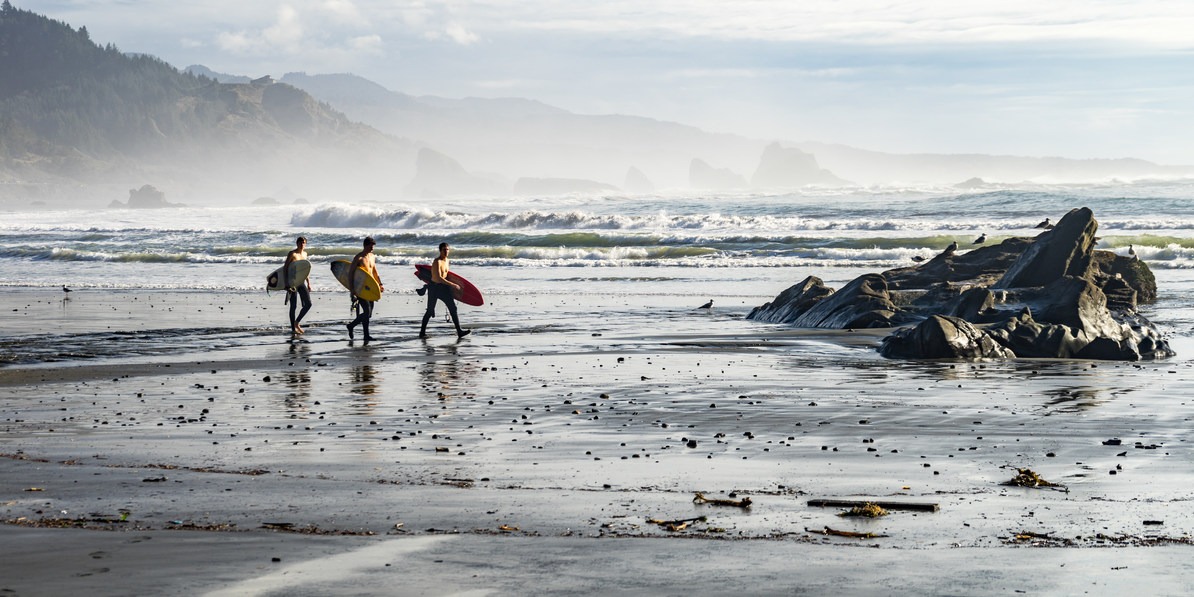
Hunters Cove near Cape Sebastian on the Southern Oregon Coast. Photo by Denis LeBlanc.
While California's Big Sur coastline gets a lot of attention from the outside world, Oregon's 363 miles of free and completely public rugged shoreline are equally impressive and certainly underrated... which also makes them less crowded. And Olympic National Park's 73 miles of completely undeveloped coastline in Washington are truly remarkable. Step into the British Columbia and the extent of wild coastline just becomes incomprehensible.
Combined, the beaches and shorelines of the Pacific Northwest are most iconically recognized by rugged sea stacks (rocky monoliths and outcroppings that have slowly separated themselves from the mainland) and charming beach towns, surf spots and fishing ports that are the subject of adventure traveler's dreams. To just get a sampling, give these highlights a once-over:
- Chesterman Beach (Vancouver Island)
- Island View Beach (Vancouver Island)
- Spanish Banks Beach (Vancouver)
- North Beach, Port Townsend (Olympic Peninsula, WA)
- Point of the Arches + Shi Shi Beach (Olympic Peninsula, WA)
- Realto Beach (Olympic Peninsula, WA)
- La Push, Second Beach (Olympic Peninsula, WA)
- Alki Beach (Seattle, WA)
- Westhaven State Park + Half Moon Bay (SW Washington Coast)
- Cape Kiwanda (Northern Oregon Coast)
- Neskowin Beach (Northern Oregon Coast)
- Harris Beach (Southern Oregon Coast)
- Samuel H. Boardman State Scenic Corridor (Southern Oregon Coast)
- Crescent Beach (Nel Norte Coast, CA)
Articles:
- Vancouver B.C.'s Best Beaches + Swimming Holes
- Washington's 20 Best Beaches
- Seattle's 20 Best Beaches + Swimming Holes
- Oregon's Best Beaches
- Best West Coast Beaches for Beginner Surfers
PNW's Best Hot Springs
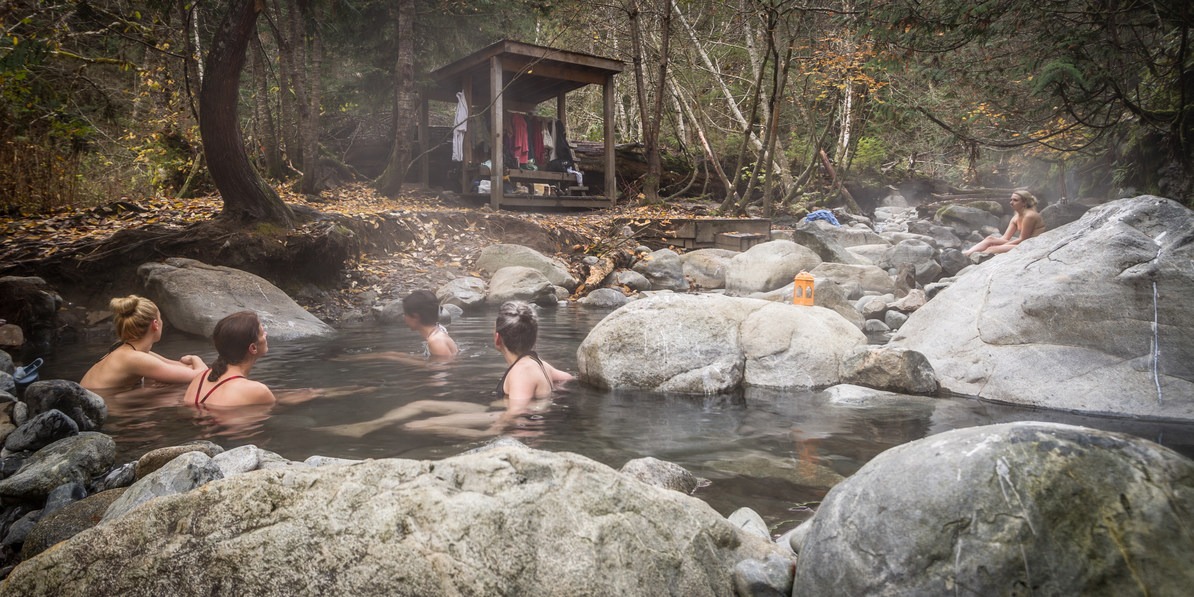
Sloquet Hot Springs in British Columbia. Photo by Duncan Sadava.
As you might expect, with volcanoes also comes geothermal springs perfect for a quiet and truly sensual soaking. It is the submersion of the Juan de Fuca Tectonic Plate colliding with the North American Plate that has caused magma to rise to the continental crust, and as with volcanoes and lava flows, this energy has to be released somehow...so, why not in a spring-fed bath deep in the forest. That's exactly what we have here. While by number there are certainly more hot springs in Nevada or Idaho, the foothills of the Cascades are certainly a perfect setting for a dip, and we invite you to check out just a few of our favorites:
- Keyhole Hot Springs (Squamish-Lillooet, BC)
- Sloquet Hot Springs (Squamish-Lillooet, BC)
- Olympic Hot Springs (Olympic Peninsula, WA)
- Goldmyer Hot Springs (North Cascades/Alpine Lakes, WA)
- Bagby Hot Springs (Mount Hood/Clackamas River, OR)
- Breitenbush Hot Springs (Willamette Foothills, OR)
- Bigalow Hot Springs (Willamette Foothills, OR)
- Terwilliger Hot Springs (Willamette Foothills, OR)
- Umpqua Hot Springs (Umpqua Wilderness, OR)
Articles:
The Tallest Trees in the World
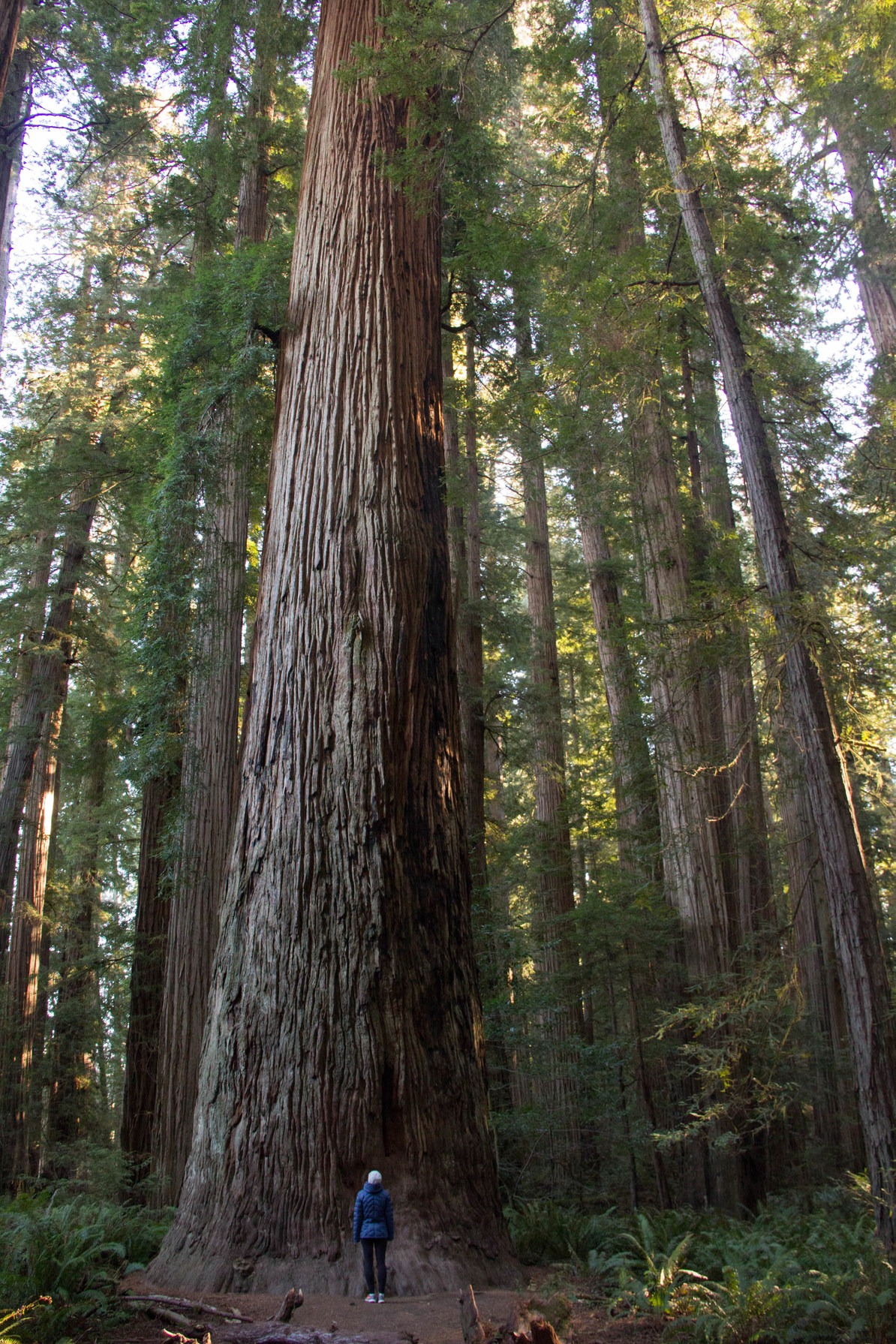
The Stout Tree in the Stout Memorial Grove, Redwoods National + State Parks. Photo by Aron Bosworth.
Standing at 379 feet (115 m), the Hyperion tree, a coastal redwood, located on California's Del Norte Coast just south of the Oregon state boarder, is the largest tree in the world, and it is surrounded by countless other giants that are seemingly unreal in their colossal size. There is nothing like standing at the base of one of these giants - it is a truly surreal experience. Their size and age (up to nearly 2,000 years old) will remind you, in the best way possible, that there are greater forces outside of ourselves and that we as humans are only temporary visitors on this phenomenal planet.
In fact, the Pacific Northwest is home to the largest specimens of numerous tree families beyond the redwoods, including spruces (Sitka spruce), cedars (western redcedar), maples (bigleaf maple) and firs (Douglas firs). The relatively mild winter climate in the coastal and lowland areas of the PNW are also home to the world's densest forests (measured in terms of total living matter per acre) - even more so than the planet's tropical rainforests. Luckily, its relatively easy to visit these natural wonders that will leave you in awe. Highlights inlclude:
- Ancient Cedars Trail Hike (Whistler, BC)
- Cathedral Grove (Vancouver Island, BC)
- Hoh Rainforest, Sitka Nature Trail (Olympic Peninsula, WA)
- Kalaloch Big Cedar Tree + Grove (Olympic Peninsula, WA - orld's 3rd largest western redcedar)
- Queets Spruce (Olympic Peninsula, WA - World's largest Sitka spruce by volume)
- Quinault Giant Sitka Spruce (Olympic Peninsula, WA - World's largest Sitka spruce)
- Quinault National Recreation Trail System (Olympic Peninsula, WA - World's co-largest Douglas fir)
- Grove of the Patriarch (Mount Rainier, WA)
- Big Tree Ponderosa Pine (Central Oregon - World's largest ponderosa pine)
- Redwoods National + State Parks (Del Norte Coast, CA - World's tallest tree)
- Jedediah Smith Redwoods State Park (Del Norte Coast, CA)
- Tall Trees Grove (Del Norte Coast, CA - Former world's tallest tree)
- Stout Memorial Grove (Del Norte Coast, CA - One of most massive coastal redwoods)
- Damnation Creek Trail (Del Norte Coast, CA)
Articles:
PNW's Most Impressive Waterfalls
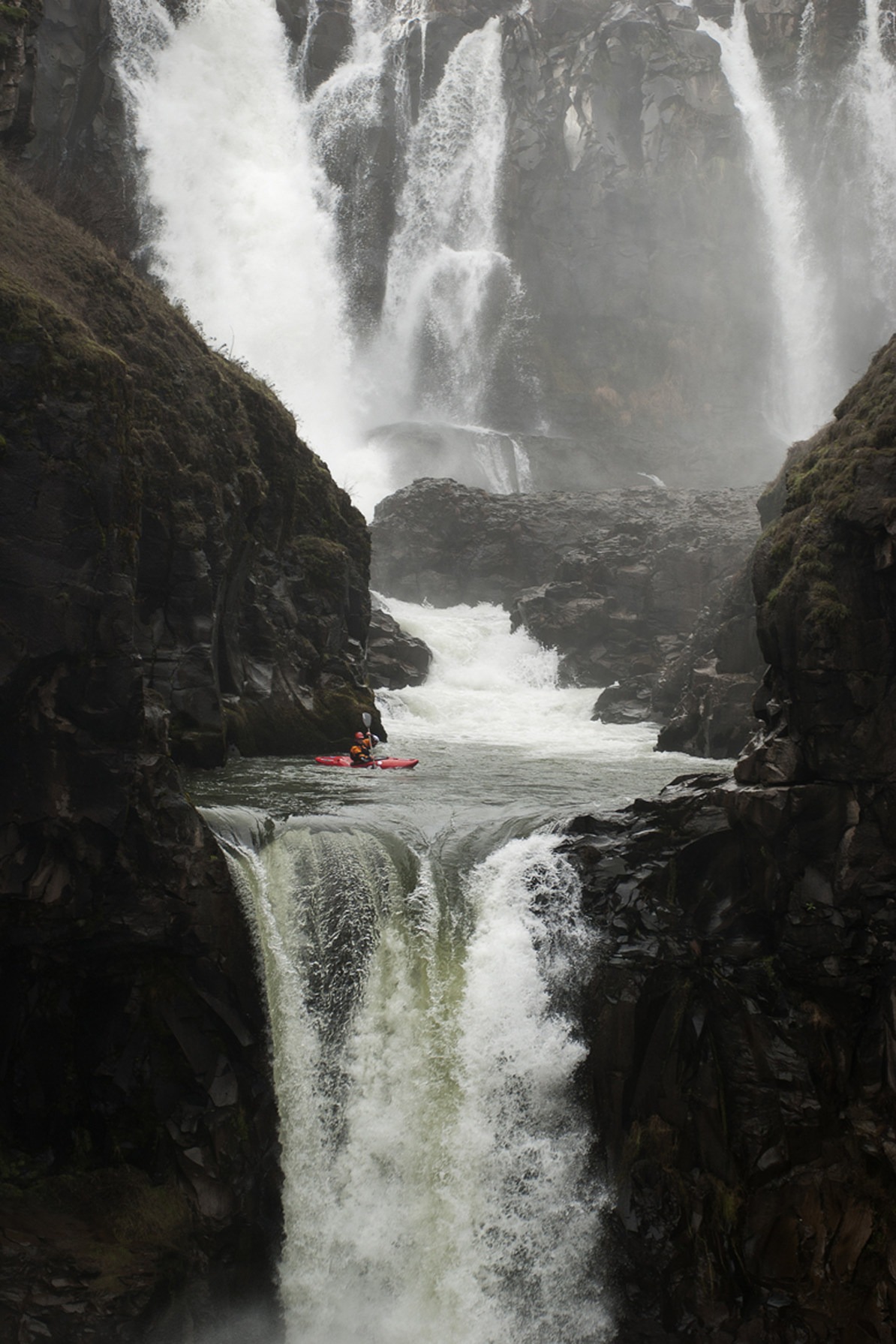
White River Falls flowing off of Mount Hood's eastern slopes in Oregon. Photo by Jeremy Forrest.
If there's one thing all outdoor enthusiasts are drawn to, it's waterfalls. Whether accessible on the side of the road, requiring a 15-mile hike or accessible only to kayakers, the Pacific Northwest is teaming with spectacular waterfalls. And, nowhere else are these waterfalls more prominently on display than in the Columbia River Gorge. Here, the Columbia River cuts through the Cascade Range, bisecting the mountains and creating the divide between Oregon and Washington. Rainwater runoff spills down all sides of this 3,000- to 4,000-foot deep chasm. In total the Columbia River Gorge is home to the highest concentration of accessible waterfalls anywhere in North America. But, beyond the Gorge, you'll find waterfalls everywhere. Some of our favorites include:
- Brandywine Falls (Whistler, BC)
- Shannon Falls (Squamish, BC)
- Bridal Veil Falls (Frasier Valley, BC)
- Wallace Falls (North Cascades, WA)
- Bridal Veil Falls (North Cascades/Alpine Lakes, WA)
- Snoqualmie Falls (Seattle, WA)
- Comet Falls (Mount Rainier, WA)
- Spray Falls (Mount Rainier, WA)
- Lewis River Falls (Mount Adams, WA)
- Latourell Falls (Columbia River Gorge, OR)
- Multnomah Falls (Columbia River Gorge, OR)
- Elowah Falls (Columbia River Gorge, OR)
- White River Falls (Tygh Valley, OR)
- Salt Creek Falls (Southern Oregon Cascades)
- McArthur-Burney Falls (Mount Shasta, CA)
Articles:
- Vancouver B.C.'s Incredible Waterfalls
- 30 Must-See Waterfalls + Hikes in Washington
- Waterfalls on the Washington Side of the Columbia River Gorge
- 10 Must See Waterfalls Not in the Gorge
- Washington's Best Winter Waterfalls
- Oregon's 35 Must-Visit Waterfalls
- In Search of Eugene Area Waterfalls
- Oregon's Best Winter Waterfalls

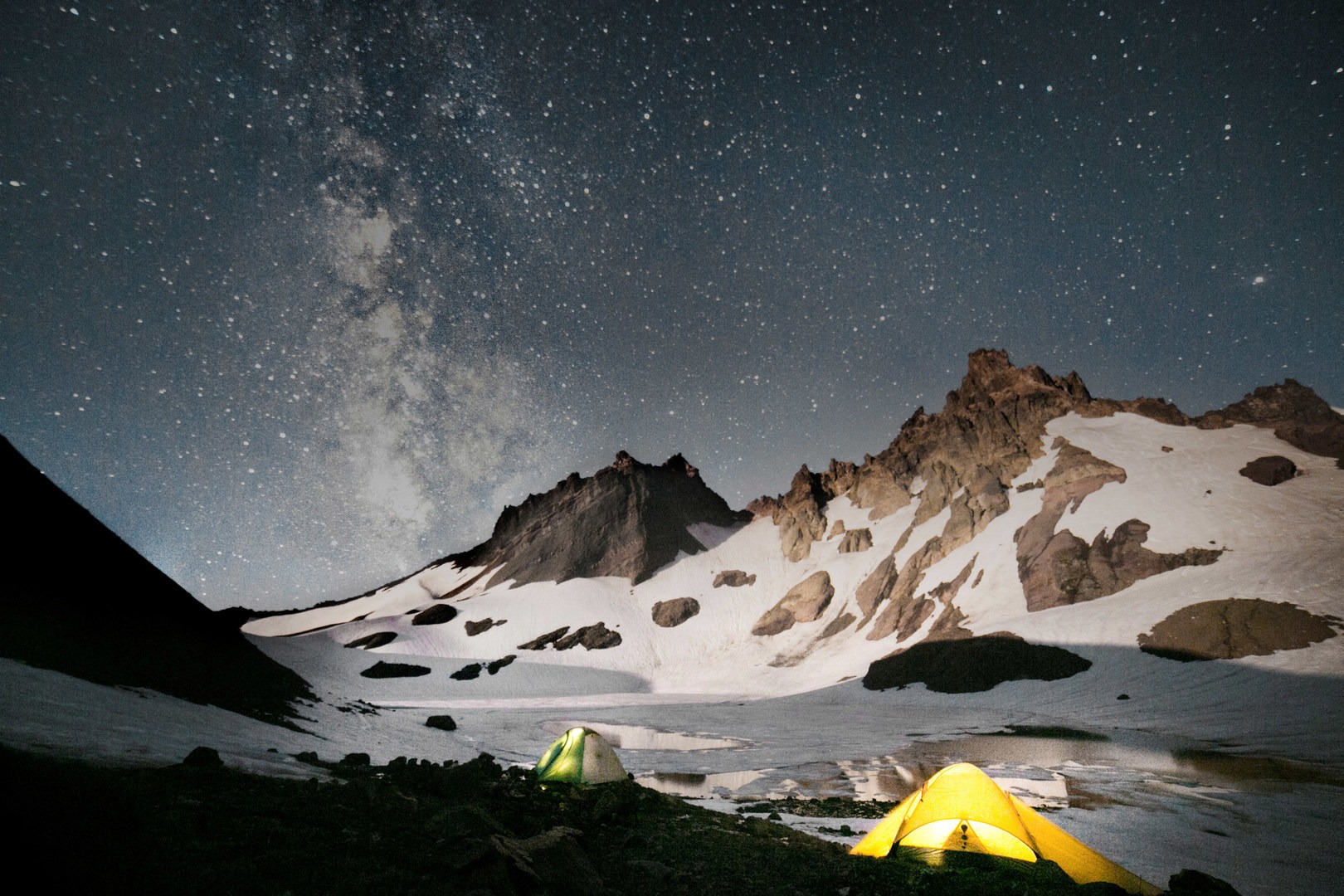
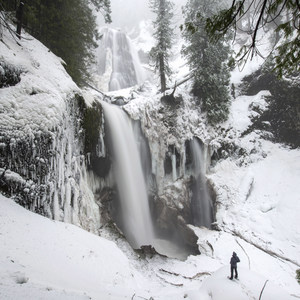
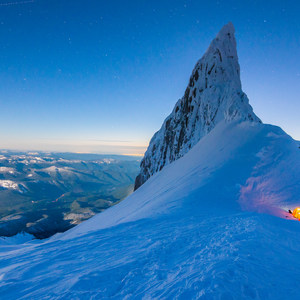
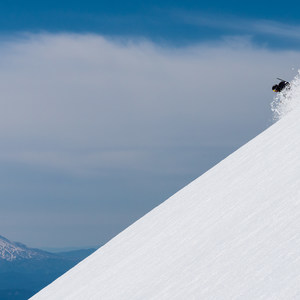
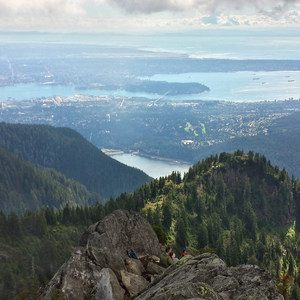
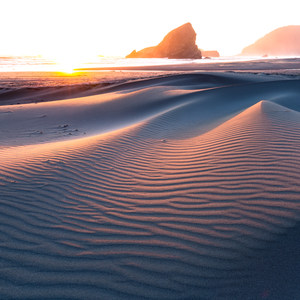
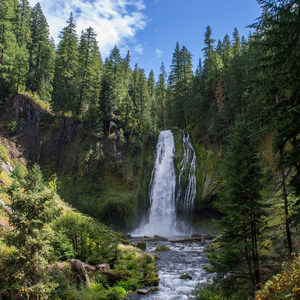
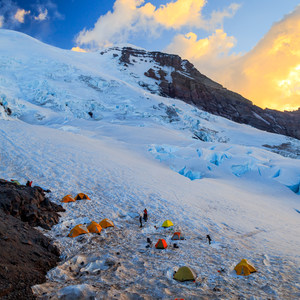
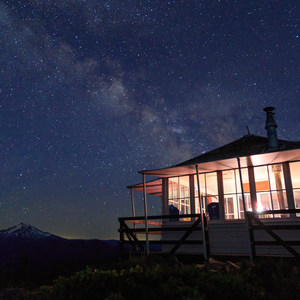



Comments
Sign In and share them.